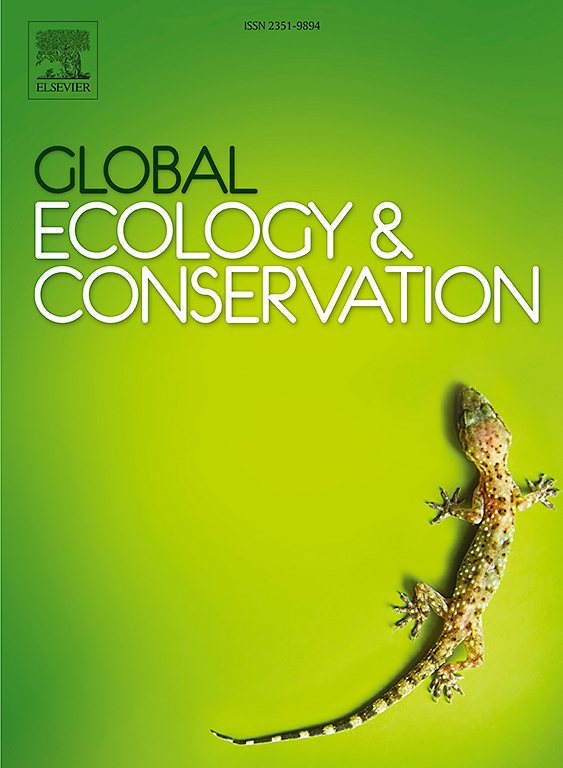种群遗传学揭示了中国野生亚洲象母系遗传多样性低的潜在威胁
IF 3.5
2区 环境科学与生态学
Q1 BIODIVERSITY CONSERVATION
引用次数: 0
摘要
本文章由计算机程序翻译,如有差异,请以英文原文为准。
Population genetics reveal potential threats from low maternal genetic diversity in wild Asian elephants in China
In China, wild Asian elephants (Elephas maximus) are primarily distributed in three prefectures in Southwest Yunnan, along the border with Laos and Myanmar. These elephants occur in small, fragmented populations and face significant threats from habitat loss and fragmentation. Here, we successfully retrieved 48 mitochondrial genomes, including those from 35 wild Asian elephants in China and those from 13 captive Asian elephants, based on whole genome sequencing data to analyze their maternal population structure and genetic diversity. In addition, we extracted approximately 600 kb of non-coding genomic regions for a comparative analysis of the genetic structure between the nuclear and mitochondrial DNA. Wild Asian elephants in China exhibited extremely low genetic diversity compared to global populations, with only two haplotypes detected in the Chinese population. Despite limited mitochondrial haplotypes, the Xishuangbanna population maintains gene flow with external populations. In contrast, the genetic diversity in the Cangyuan population was even more severely limited, with no evidence of gene flow with the nearest populations in Myanmar. Given the close genetic relationship between the Cangyuan population and populations in other countries, the most promising strategy for introducing genetic diversity to rescue the Cangyuan population may involve translocating Asian elephants from other countries. This study provides a deeper understanding of the genetic status of wild Asian elephants in China and offers important insights for future conservation efforts in China and elsewhere.
求助全文
通过发布文献求助,成功后即可免费获取论文全文。
去求助
来源期刊

Global Ecology and Conservation
Agricultural and Biological Sciences-Ecology, Evolution, Behavior and Systematics
CiteScore
8.10
自引率
5.00%
发文量
346
审稿时长
83 days
期刊介绍:
Global Ecology and Conservation is a peer-reviewed, open-access journal covering all sub-disciplines of ecological and conservation science: from theory to practice, from molecules to ecosystems, from regional to global. The fields covered include: organismal, population, community, and ecosystem ecology; physiological, evolutionary, and behavioral ecology; and conservation science.
 求助内容:
求助内容: 应助结果提醒方式:
应助结果提醒方式:


